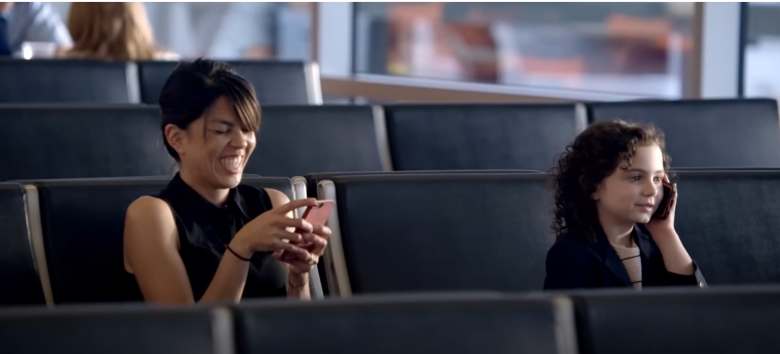
Quick Summary
- Mattel transformed mounting criticism into marketing gold through strategic cultural awareness.
- Brand perception shifted from fashion doll to empowerment tool through real-world demonstrations.
- The campaign’s timing capitalized on broader cultural conversations about gender and careers and has earned over 70 million YouTube views.
Few toys have sparked as much love, debate, and reinvention as Barbie. She’s a cultural icon, a lightning rod for debate, and, as of 2015, a reimagined emblem of empowerment.
With the “Imagine the Possibilities” campaign, Mattel took Barbie from a criticized relic of the past to a modern symbol of girl power.
The ad challenged traditional ideas of femininity, celebrated imagination, and redefined how toys can shape aspirations.
The result was a viral sensation that accrued more than 20 million YouTube views in its first month alone. The reason? The ad’s central focus wasn’t kids playing with the doll.
Instead, it sold an idea. It reintroduced Barbie as a tool for building confidence and envisioning big dreams and set the stage for the wildly popular “Barbie” movie.
Background
Mattel has been making Barbie dolls since 1959, when she debuted as a shapely, fashion-forward figure. She’s been everything from a fashion model to a business executive to an astronaut.
But over time, Barbie began to feel less like a dreamer and more like a dated stereotype.
Parents demanded more meaningful play experiences for their children. Social media amplified criticisms of gender stereotypes in toys. Competitors launched dolls with diverse body types and backgrounds.
By the mid-2010s, Mattel faced waning sales and growing cultural backlash. They needed to change the conversation—and fast.
They chose not to defend Barbie’s measurements but to measure her impact on girls’ dreams instead. They positioned her as a powerful tool for storytelling and imagination—a partner in dreaming up big futures.
The bold move paid off. “Imagine the Possibilities” gained over 20 million views in its first month, revitalized Mattel’s brand message, and redefined Barbie’s role in a modern world.
Campaign Overview
 “Hello. My name is Gwenyth, and I’ll be your professor today.”
“Hello. My name is Gwenyth, and I’ll be your professor today.”
“Imagine the Possibilities” emerged as a brilliantly simple concept that immediately caught attention.
The ad opens in everyday locations—a university lecture hall, a veterinary clinic, a soccer field. But there was a twist: Instead of adults leading these spaces, young girls are front and center.
A poised girl lectures college students about the brain; another examines a dog with a stethoscope while concerned pet owners look on. One young soccer coach paces the sidelines, barking instructions to her team.
Then comes the reveal: The professional scenes were products of the girls’ imaginations while they played with Barbie dolls.
The ad closes with the tagline, “When a girl plays with Barbie, she imagines everything she can become.”
This clever reveal ties Barbie to a larger purpose—showing how imaginative play can plant the seeds of confidence, ambition, and self-discovery.
And it worked. The campaign’s thoughtful messaging resonated deeply with audiences—adults and children alike—around the globe.
Key Success Factors
 “I’ll be your veterinarian today. I’m Dr. Brooklyn.”
“I’ll be your veterinarian today. I’m Dr. Brooklyn.”
Barbie’s “Imagine the Possibilities” campaign was hugely successful for several reasons:
Strategic cultural awareness
The mid-2010s saw increasing conversations around gender equality and breaking societal norms. The campaign aligned perfectly with these cultural shifts, making Barbie relevant in a way that felt fresh and progressive.
Authentic documentation
The campaign captured genuine reactions from both children and adults, creating marketing moments impossible to script. These raw interactions resonated particularly well on social media, where polished content often feels artificial.
Perfect timing
The launch coincided with peak discussions about gender equality and female empowerment. Mattel’s campaign felt like a natural contribution to an existing conversation rather than a forced marketing message.
Multi-generational appeal
Parents saw their hopes reflected while children found inspiration in confident young role models. This dual resonance created powerful word-of-mouth marketing as families shared and discussed the campaign together.
Subtle branding
Mattel resisted the urge to make Barbie the overt focus of the ad. By prioritizing the girls’ imaginative play over the product, the campaign came across as genuine rather than sales-driven. This soft-sell approach strengthened the emotional connection to the brand.
Innovative Elements
 “Hello, everyone. I’m your new coach. My name is Maddie.”
“Hello, everyone. I’m your new coach. My name is Maddie.”
What made this campaign truly innovative was its approach to storytelling and cultural messaging:
Documentary-style reinvention
The campaign abandoned traditional toy commercial tropes for raw, real-world footage. This fresh approach made the message feel more like a social movement than an advertisement campaign.
User-generated momentum
After the initial video launched, it inspired parents to start sharing their own children’s career role-play moments across social media. These authentic shares amplified the campaign message without additional marketing spend.
Flipping the script
Mattel transformed their biggest brand challenge into their core message. Rather than defend or ignore critiques about unrealistic standards, they reframed Barbie as a launch pad for realistic ambitions.
Real-world theater
By staging scenes in actual workplaces with genuine professionals, Mattel created a powerful visual connection between play and future possibilities. Each location choice reinforced the campaign’s authenticity.
Crossing platforms
The campaign’s structure allowed for natural expansion across multiple channels. The core video sparked conversations on social media, inspired in-store experiences, and generated educational partnerships.
Impact and Results
 “I had the most fantastic day in the office.”
“I had the most fantastic day in the office.”
The campaign became one of 2015’s most talked-about marketing initiatives, generating massive viewership and sparking widespread conversation.
Viral reach
The campaign video garnered over 20 million YouTube views in its first month (27 million as of December 2024), earning acclaim for its empowering message.
Brand evolution
The ad’s success helped Mattel reposition Barbie as a contemporary icon. By aligning with modern values of empowerment and inclusion, Mattel transformed Barbie’s image from a fashion icon to an inspiration catalyst, particularly among skeptical parents.
Positive sentiment
By addressing criticisms head-on, “Imagine the Possibilities” reignited public goodwill for Barbie and Mattel. The campaign earned praise from media outlets, educators, and parents. Barbie went from being a polarizing figure to being celebrated as an agent of positive change.
 “This is Peter. He’s a triceratops.”
“This is Peter. He’s a triceratops.”
Product evolution
Following the campaign, Mattel launched the Barbie Fashionistas line, featuring dolls with different body types, skin tones, hairstyles, and physical abilities, reflecting a commitment to inclusivity.
Business resurgence
After years of declining sales, Barbie experienced a comeback, with global sales increasing during the 2015 holiday season and continuing to grow in subsequent years, proving the campaign’s impact on consumer perception.
Industry influence
The campaign’s success inspired a broader shift in toy marketing, with more brands focusing on empowerment and potential rather than just entertainment.
Educational impact
Barbie transitioned from a fashion icon to a tool for imaginative storytelling and empowerment, supported by initiatives like the “You Can Be Anything” series and the Barbie Role Models program, showcasing over 200 careers and real-world achievers.
Cultural relevance
Mattel’s ability to “read the room” helped position “Imagine the Possibilities” at the forefront of conversations about representation and gender roles in play, aligning the brand with the zeitgeist of the time.
Marketer Takeaways
The campaign laid the foundation for the incredibly successful “Barbie” movie eight years later.
Barbie’s comeback holds valuable lessons for marketers looking to craft impactful campaigns:
- Listen before you leap. Understanding cultural shifts is always good practice, but for the most successful brands, it’s a survival strategy.
- Control the conversation. Strong campaigns actively shape cultural narratives rather than simply responding to them.
- Authenticity beats perfection. Real moments resonate more powerfully than polished productions.
- Think beyond the immediate win. Successful campaigns create long-term opportunities beyond immediate results.
Looking to turn your brand’s challenges into opportunities? Media Shower’s AI marketing platform helps you read the room and craft campaigns that don’t just join conversations but transform them. Click here for a free trial.


